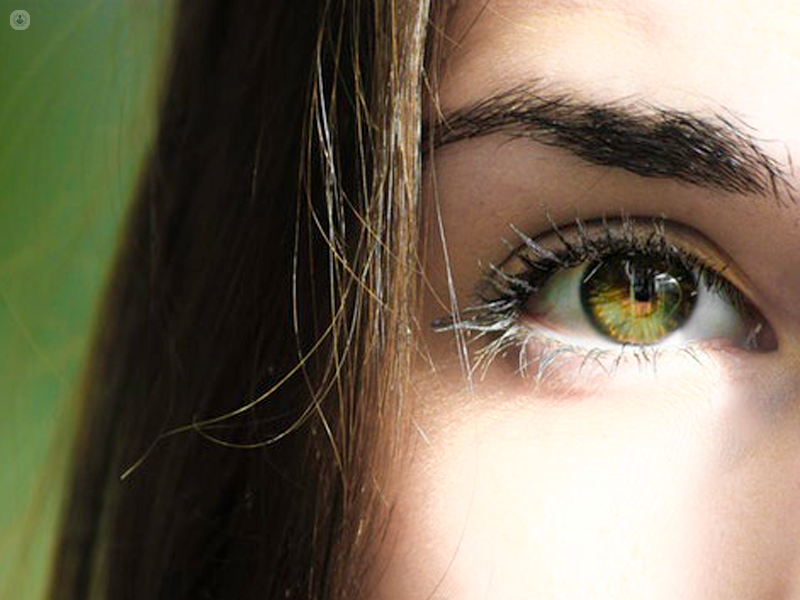Keratitis
Mr Mrinal Rana - Ophthalmology
Created on: 07-19-2016
Updated on: 08-03-2023
Edited by: Kate Forristal
What is it?
Keratitis is a condition in which the eye's cornea becomes inflamed, mostly due to an ongoing infection. However, surgical trauma or any foreign object entering the eyes can also cause inflammation.
This condition can affect anyone, but people with weakened immune function (caused by diseases such as HIV) and people who wear contact lenses have a higher risk of developing keratitis. You should see an ophthalmologist in order to treat keratitis.

What are the symptoms of keratitis?
The symptoms of keratitis are usually clear. These usually include:
- moderate to severe pain in the eye area
- photophobia (light sensitivity)
- hyperaemia (red eyes)
- excessive tearing
- vision abnormalities (blurred vision)
- a sensation that there is something in your eye
What causes it?
Any tear or superficial trauma of the cornea can lead to keratitis. Factors which increase the risk of developing keratitis include:
- wearing contact lenses (with poor hygiene or incorrect care of the contact lenses solution)
- a decrease in quality and quantity of tearing
- immune conditions
- some medications (such as corticosteroids)
- chemotherapy
How is it treated?
Treatment for keratitis will depend on the cause of the infection to the cornea. The inflammation may be of bacterial, fungal, protozoal, viral or ulcerative nature.
Usually, you start by using some eye drops, medications or injection therapy. Any foreign object found in the eye will also be removed. More specifically, the main treatments according to the nature of the infection are:
- Bacterial keratitis: Often due to poor hygiene and improper contact lenses care, although it can arise following an abrasion to the cornea and after using make-up contaminated by bacteria. You may need to take antibacterial drugs or, in the most severe cases, oral antibiotics.
- Viral keratitis: There are two types of viral keratitis: dendritic or adenovirus keratitis. Dendritic keratitis can lead to a chronic inflammation of the cornea and, in the most severe cases, it can cause glaucoma or even blindness. Adenovirus keratitis is usually less severe and it can lead to the formation of corneal opacities. Both types of viral keratitis are treated with eye drops and antiviral medications. However, viral keratitis may become a recurrent condition.
- Fungal keratitis: A very rare and dangerous condition which requires immediate treatment, as it can cause permanent sight loss if it reaches an advanced stage. Immunosuppressed individuals have a higher risk of developing fungal keratitis. It can be treated with eye drops and oral antifungal drugs;
- Acanthamoeba keratitis: This type of keratitis is caused by a parasite and it is very hard to treat. In the most severe cases, a corneal transplant may be required.

